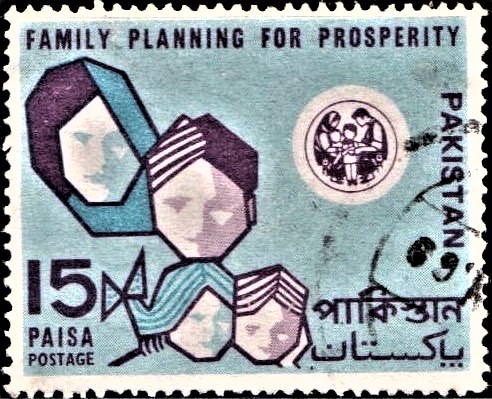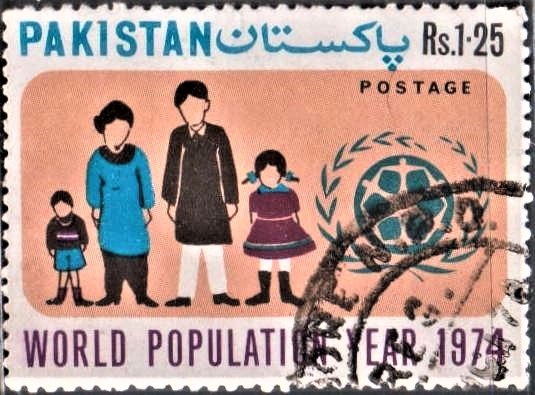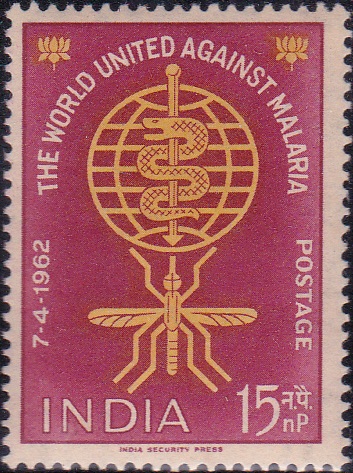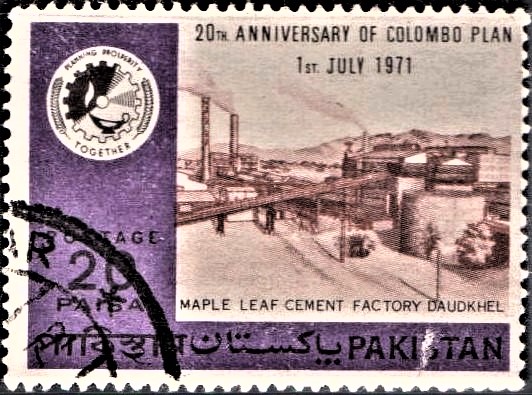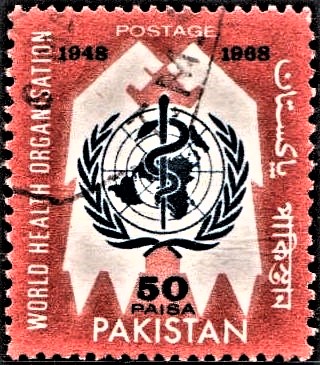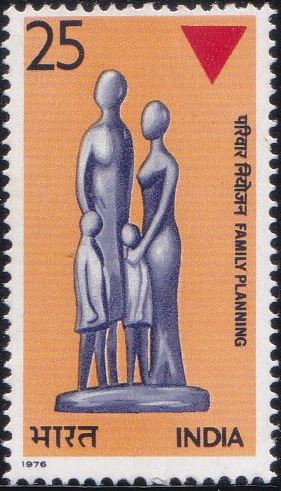
India on Family Planning 1976
A commemorative postage stamp on the Family Planning :
Issued on Sep 22, 1976
Issued for : The Posts and Telegraphs Department feels privileged to associate itself with the cause of family planning by bringing out a commemorative stamp.
Description of Design : The design of the stamp is symbolic on the theme ‘Small Family – Happy Family‘.
Designed by : Shri A.K. Nagar, New Delhi
Type : Stamp, Mint condition
Colour : Multicolour
Denomination : 25 Paise
Overall Size : 4.06 X 2.28 cms.
Printing Size : 3.80 X 2.0 cms.
Perforation : 14½ x 14
Watermark : Printed on unwatermarked adhesive stamp paper
Number Printed : 30,00,000
Number per issue sheet : 50
Printing Process : Photogravure
Printed at : India Security Press
About :
- The Family Planning Programme in India is one of the important elements in the country’s total strategy of socio-economic growth. It aims, on the one hand, to create in man the urge for a better life for himself and for his offspring and, on the other, to make available to him some of the essential means of economic and social betterment.
- The basis of the programme is entirely voluntary. It must draw, on its own strength, people, particularly those living in villages, to the vast network of primary health centres and sub-centres where health, family planning, nutrition and allied services are available for the asking.
- Launched officially in 1952, the family planning programme was, in the initial years, i.e., under the First Five Year Plan and to a considerable extent under the Second Plan also, more or less clinic-based. Later, under the Third Plan, greater emphasis was placed on the extension education approach to make it community-based as well as on expansion of services to meet the demand that this approach created. The process was carried further under the Fourth Plan. Non-official organisations, including voluntary bodies, were encouraged, given incentives and financial support, to take the programme to the doorsteps of the common people and to help the government in converting it into a mass movement.
- Under the current Plan, integrated health, family planning and allied services have been included in the ‘minimum needs programme’. High priority has been accorded to rural and backward areas. Research in bio-medical, motivational and other areas has been intensified to develop new contraceptive methods and devices, identify specific problems of specific people and design strategies and campaigns which may prove more effective.
- More than 80,000 medical, para-medical and other personnel are engaged in the programme today. In the rural areas alone, the number of primary health centres (one for every block) and sub-centres (one for 10,000 people) exceeds 5,300 and 35,000 respectively. In the urban areas, in addition to hospitals and dispensaries, there are several family welfare planning and post-partum centres. The package of family planning services in these centres includes sterilisation, IUD and conventional contraceptives.
- The programme is financed totally by the Central Government. Its implementation is done through the State Governments. The Central Family Planning Council, of which the Union Minister of Health and Family Planning is the Chairman, is the apex body which helps the government in formulating broad policies and supervising their implementation from time to time.
- There are in India today about 104 million couples in the reproductive age-group (age of wife 15-45). Nearly 19 per cent of these couples are currently protected against conception through voluntary adoption of one method or the other. The birth rate has come down from 41.7 in 1961 to 34.5 per thousand in 1974. The Fifth Plan target is to bring it down to 30. To achieve this target it is necessary that about 35 per cent of the total number of eligible couples accept family planning.
- Now, as part of the National Population Policy, family planning has been accorded a very high place in the national order of priorities. It has been placed at the centre of all development activities and is a vital component of the total strategy of socio-economic growth.
- The programme has been picking up fast. The people are accepting it in increasingly large numbers and there is every hope that the birth rate of 30 per thousand set for the Fifth Plan will be achieved.
Subscribe
Login
0 Comments



